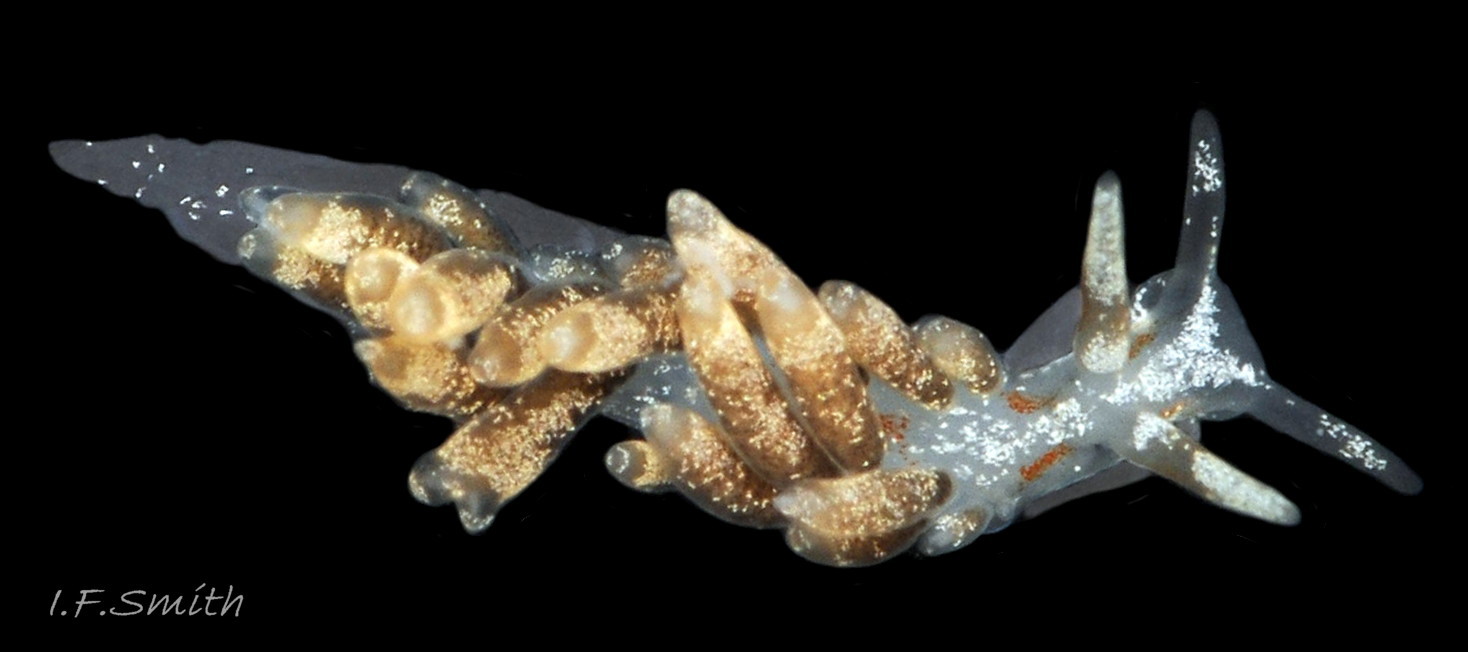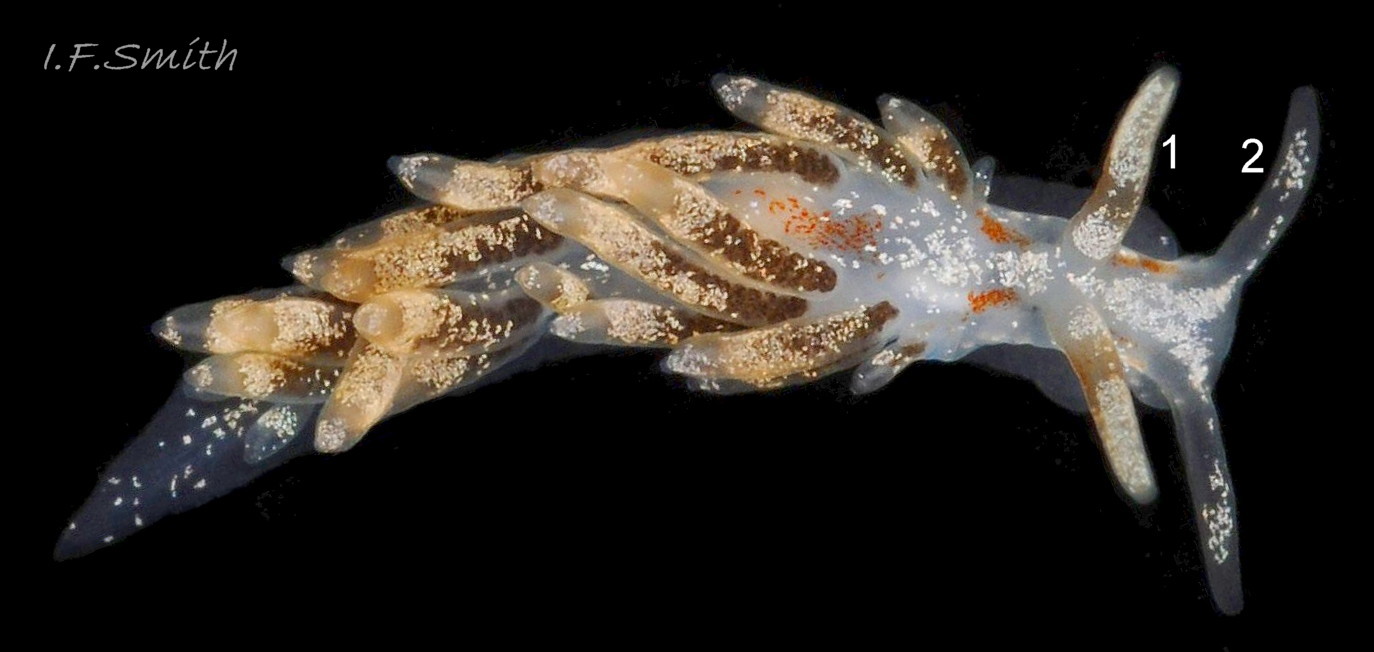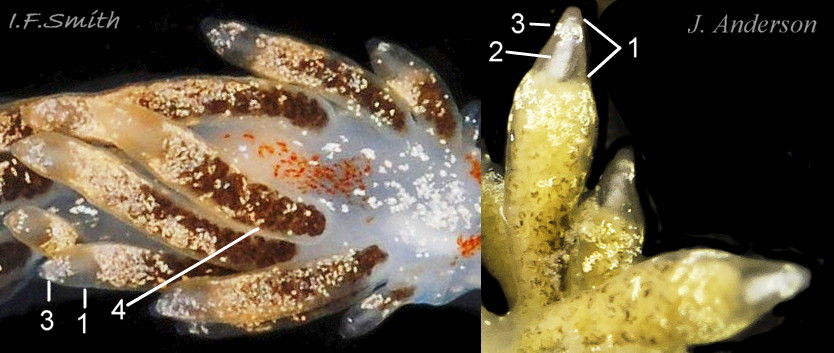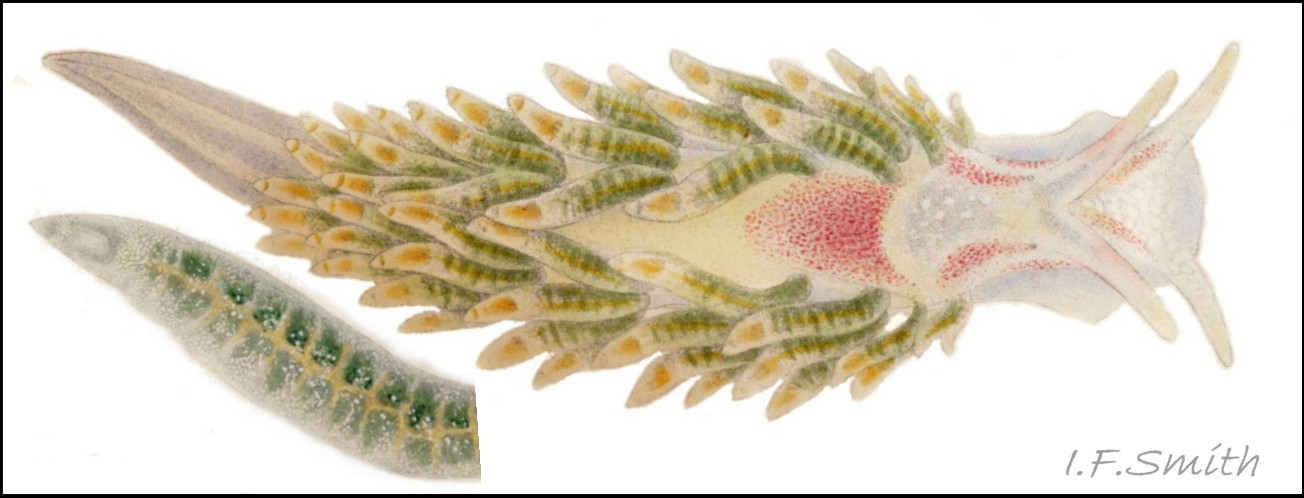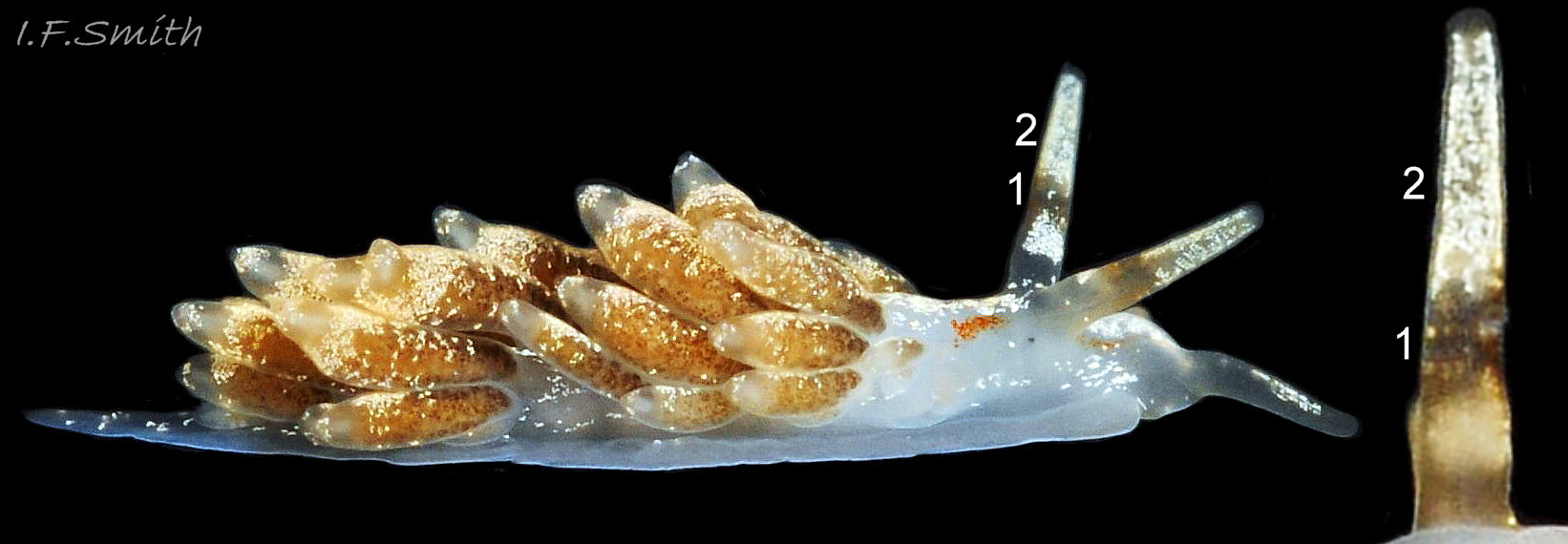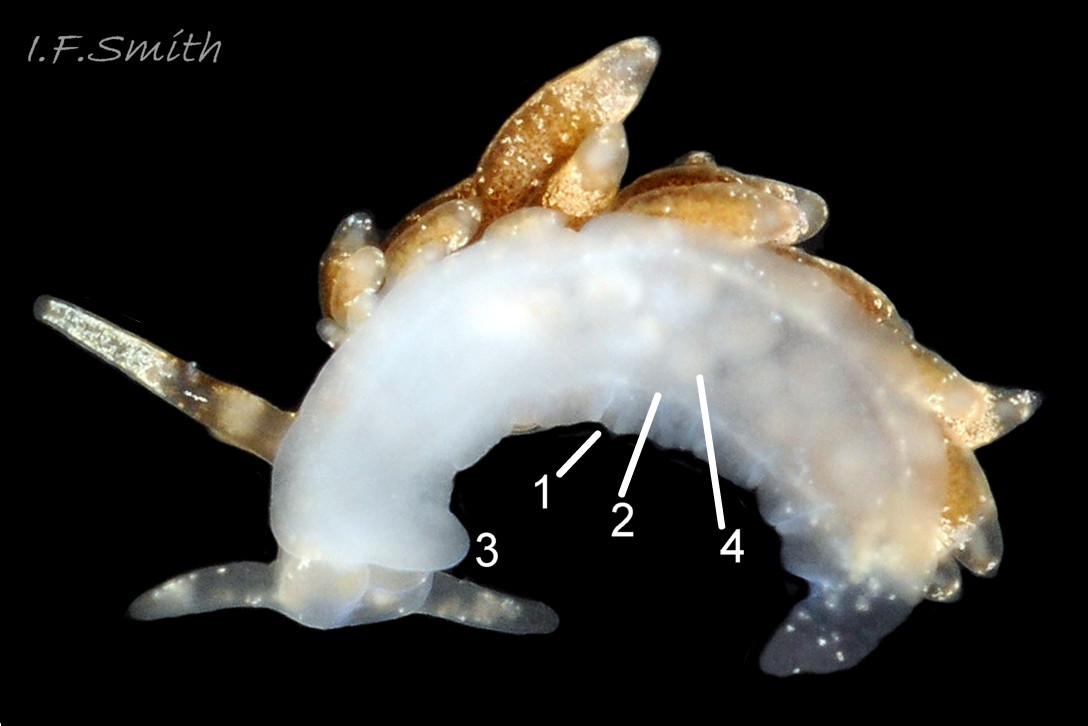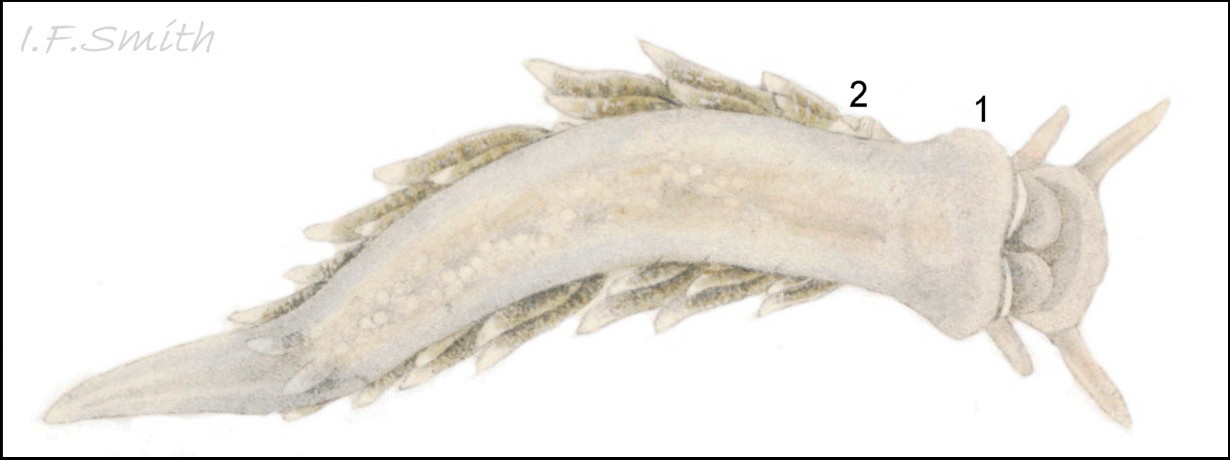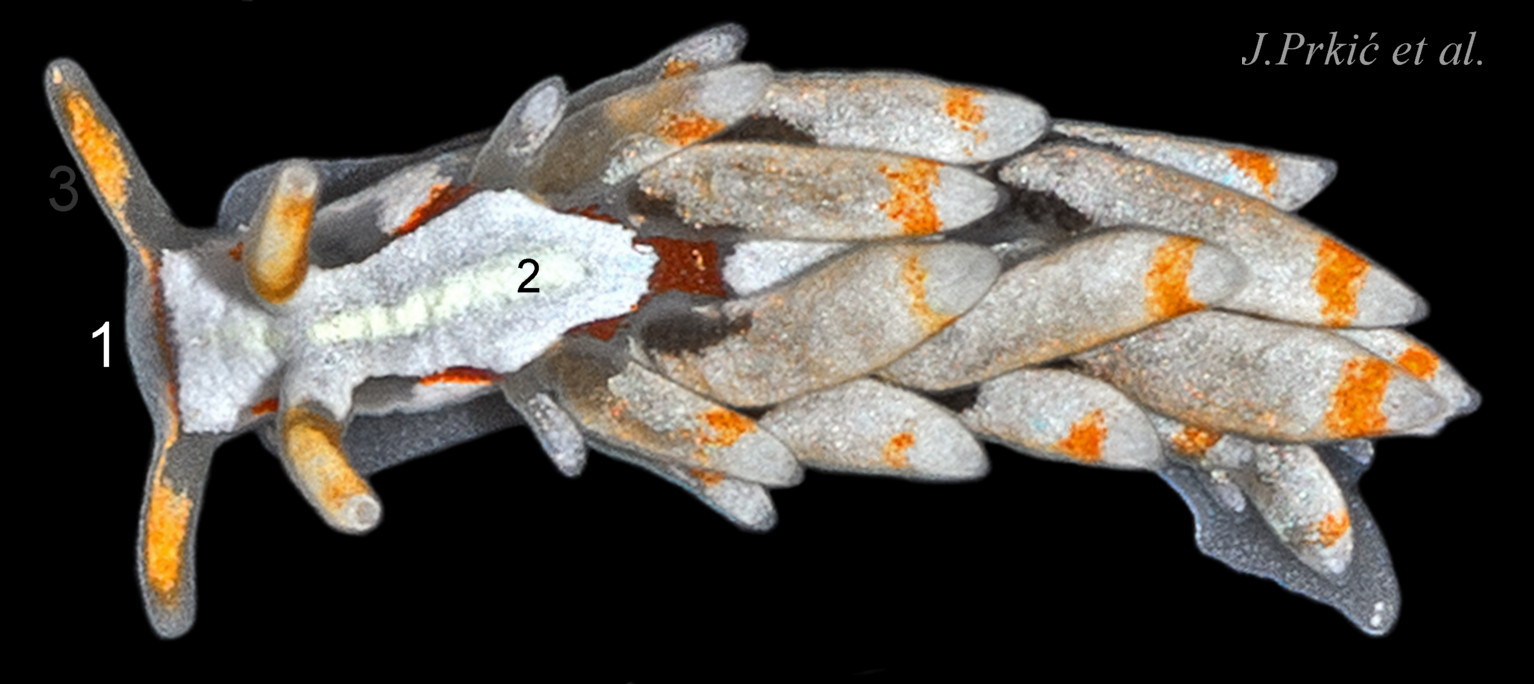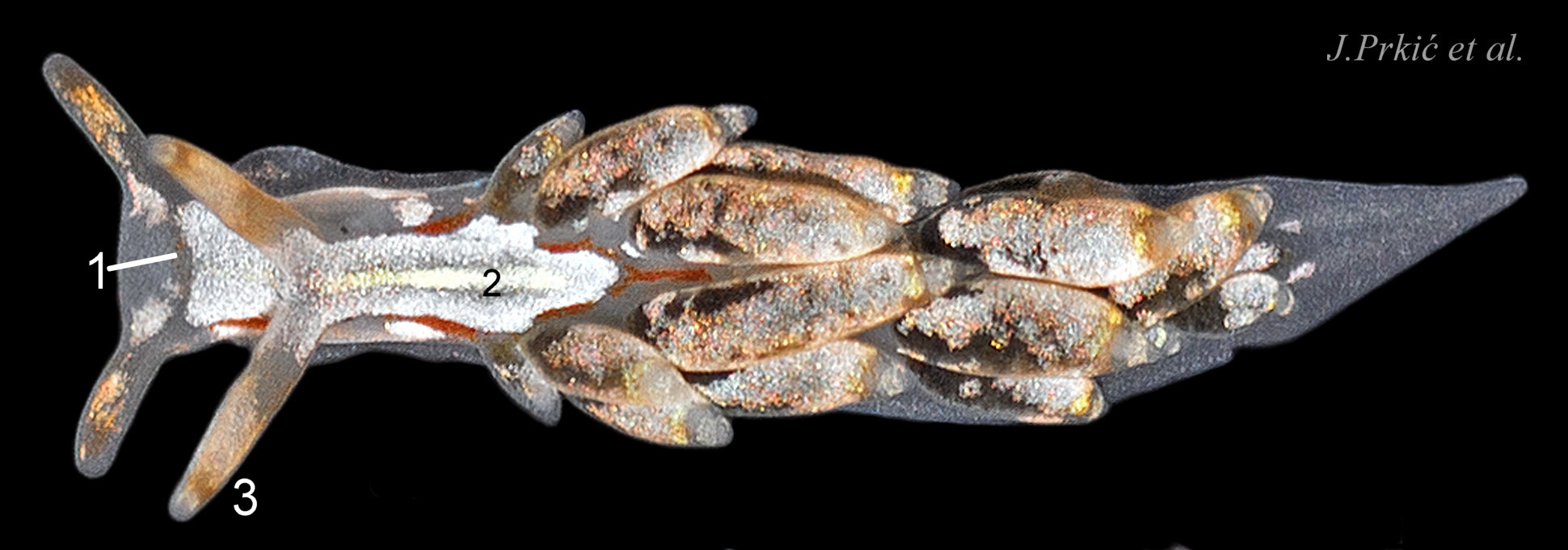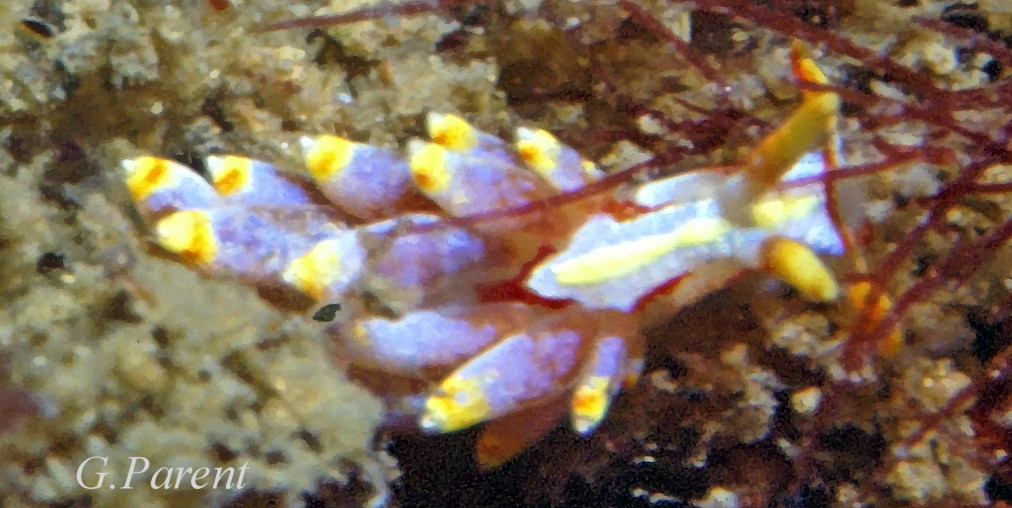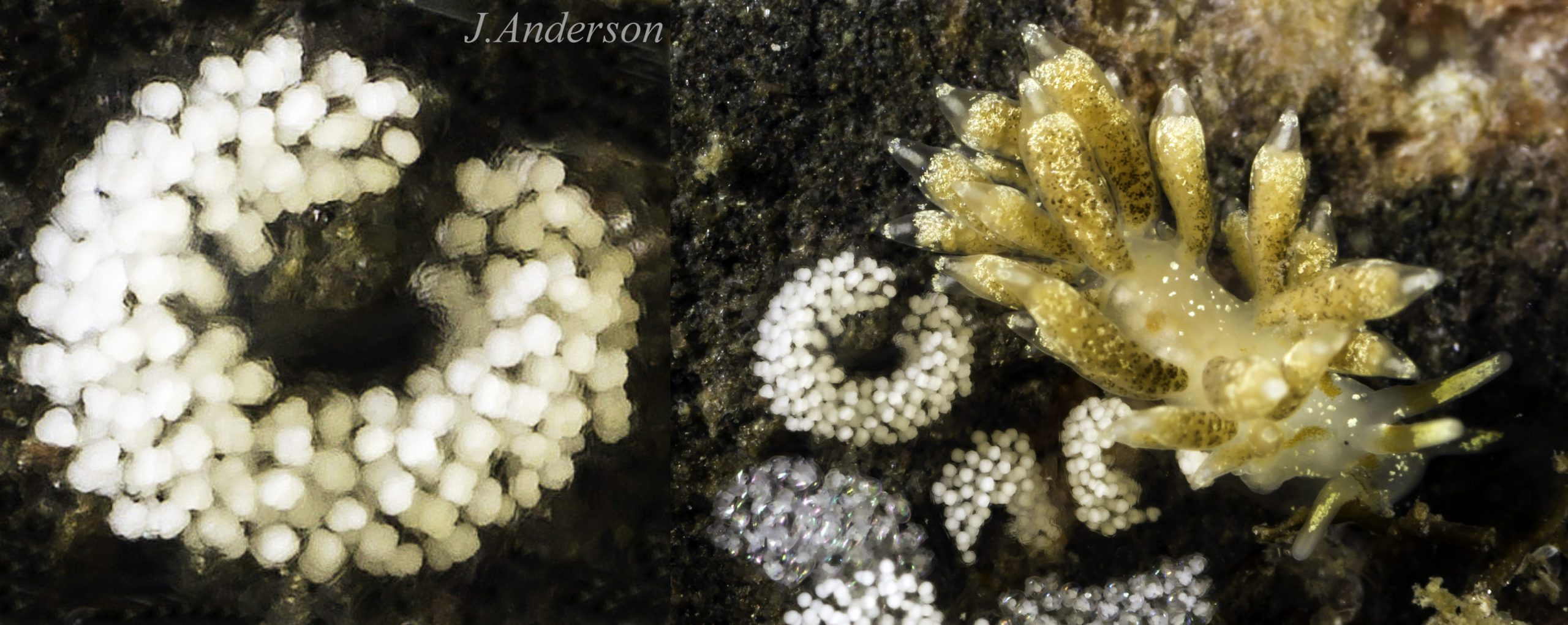Click image to enlarge with full caption. Main text below slider.
Trinchesia foliata (Forbes & Goodsir, 1839)
PDF available at www.researchgate.net/publication/362830994_Trinchesia_fol…
Current taxonomy: World Register of Marine Species www.marinespecies.org/aphia.php?p=taxdetails&id=1037415
Synonyms: Eolidia foliata Forbes & Goodsir, 1839;
Cuthona foliata (Forbes & Goodsir, 1839); Eolis olivacea Alder & Hancock, 1842.
GLOSSARY BELOW
Description
T. foliata grows up to 11 mm long. The body is translucent white with many flecks of opaque white or yellowish white, which concentrate on the head into a triangular patch 01 Trinchesia foliata . An opaque red, orange or brown streak extends forwards from each rhinophore to an oral tentacle, and another, curved like an eyebrow, extends backwards from each rhinophore to the anterior clump of cerata 02 Trinchesia foliata . Usually there is a dorsal patch of the same colour between the second clumps of cerata.
The substantial cerata 01 Trinchesia foliata are arranged along each side in up to eight transverse rows of up to four or, rarely, five cerata. Though few in number their relatively large size causes them to conceal most of the dorsum. When unfed for a time they become thinner and cylindrical 02 Trinchesia foliata . The cerata are translucent colourless revealing a brown, yellowish brown 03 Trinchesia foliata or, occasionally, olive green 04 Trinchesia foliata internal digestive gland except in the apex, which is transparent revealing an elongate whitish cnidosac. The contents of the ceratal digestive gland are sometimes visibly arranged in transverse bands 03 Trinchesia foliata & 04 04 Trinchesia foliata . Freckles of glistening opaque white are scattered over most of the surface apart from the basal half of the transparent apical zone 03 Trinchesia foliata .
The smooth, almost linear, bluntly tipped rhinophores 05 Trinchesia foliata are translucent dull brownish white with an internal brownish ring below the mid-point, and dense opaque white freckles on the distal half.
The head has translucent white oral tentacles with freckles of white pigment mainly on the distal half and, sometimes, a very faint brownish ring like that on the rhinophores. A black eye is visible near the posterior base of each rhinophore. Ventrally the head is occupied by the large outer lips of the mouth. The lower lip is divided into two large rounded lobes 06 Trinchesia foliata .
The translucent white foot 07 Trinchesia foliata & 08 Trinchesia foliata is wider than the body and is parallel-sided for most of its length. It is widest at the anterior where there are slight rounded propodial swellings, and it tapers at the posterior to a blunt tip. On mature adults white spheroid ovotestes are often visible through the sole 07 Trinchesia foliata . The hermaphrodite genital opening is on a small protrusion below the first row of cerata on the right 08 Trinchesia foliata & 12 Trinchesia foliata
Key identification features
Trinchesia foliata
1) Maximum length 11 mm.
2) Occurs from Norway and Faeroes to Bretagne, France and Atlantic Iberia. Mediterranean uncertain.
3) Digestive gland in cerata usually brownish 03 Trinchesia foliata , sometimes olive green.
4) Reddish streak in front of and behind each brownish white rhinophore, but not connecting the oral tentacles to each other 02 Trinchesia foliata .
5) Many opaque white or yellowish flecks in body and head, but not forming a distinct line passing between the rhinophores.
6) Distal half of rhinophores have dense opaque white freckles. Internal dark ring is only below mid-point 05 Trinchesia foliata .
Similar species
Trinchesia genovae (O’Donoghue, 1926) 09 Trinchesia foliata & 10 Trinchesia foliata
T. genovae is variable. Features 4, 5 & 6 are diagnostic (pers. comm. J. Prkić, 16 August 2022).
1) Maximum length 6 mm.
2) Usually found in the Mediterranean, but a few records from south and west Ireland.
3) Digestive gland in cerata usually brownish. Cerata can be blue 11 Trinchesia foliata
4) Transverse reddish or brownish line at the front of the head connecting the yellow oral tentacles.
5) Distinct, yellow or white, dorsal line on the body passes from in front of the rhinophores between them to between the second rows of cerata.
6) Yellowish rhinophores have a variably distinct, brownish or orange ring subapically and in basal half.
Habits and ecology
T. foliata lives at LWS on rocky shores and in the shallow sublittoral on or near its hydroid prey, which may include Abietinaria abietina, Sertularella polyzonias, S. gayi, Tubularia spp., Obelia geniculata, Halecium spp. and Dynamena pumila; a much larger variety than most other nudibranchs. Like other nudibranchs, it is a simultaneous hermaphrodite. In Britain it lays broad ‘C’ shape spawn masses 12 Trinchesia foliata from May to August.
Distribution and status
T. foliata occurs from Norway and Faeroes to Bretagne, France and Atlantic Iberia. Its presence is uncertain in the Mediterranean where there are several similar species/forms. GBIF map www.gbif.org/species/2292345 . There are scattered records from round Britain and Ireland, NBN UK map species.nbnatlas.org/species/NHMSYS0021185563
Acknowledgements
I gratefully thank Jim Anderson, Géry Parent and Jakov Prkić, Alen Petani, Đani Iglić and Leo Lanča for use of images.
References and links
Alder, J. & Hancock, A. 1845-1855. A monograph of the British nudibranchiate mollusca. London, Ray Society. Family 3 Plate 26 www.biodiversitylibrary.org/item/131598#page/390/mode/1up
Prkić, J., Petani, A., Iglić, Đ. and Lanča, L. 2018. Opisthobranchs of the Adriatic Sea. Photographic atlas and list of Croatian Species. Ronilački klub Sveti Roko, Bibinje, Croatia. www.conchbooks.de/?t=53&u=44511
Thompson, T.E. & Brown, G.H. 1984. Biology of opisthobranch molluscs 2. London, Ray Society.
Glossary
cerata = (sing. ceras) lobes on dorsum of aeolids and some other seaslugs.
cnidocytes = explosive stinging cells of Cnidaria. en.wikipedia.org/wiki/Cnidocyte
cnidosac = storage capsule at tips of cerata of Aeolidiidae for ingested unexploded cnidocytes.
digestive gland = large organ in gastropods which acts like the liver and pancreas in mammals to absorb food.
distal = away from centre of body or from point of attachment.
hermaphrodite, simultaneous = individual acts as both male and female at the same time with similar partner.
LWS = low water spring tide; two periods of a few days each month when tide falls lowest.
ovotestis = (pl. ovotestes) hermaphrodite organ serving as both ovary and testis.
propodium = anterior portion of gastropod foot. (adj. propodial).
rhinophores = chemo-receptor tentacles on top of head of nudibranch.
